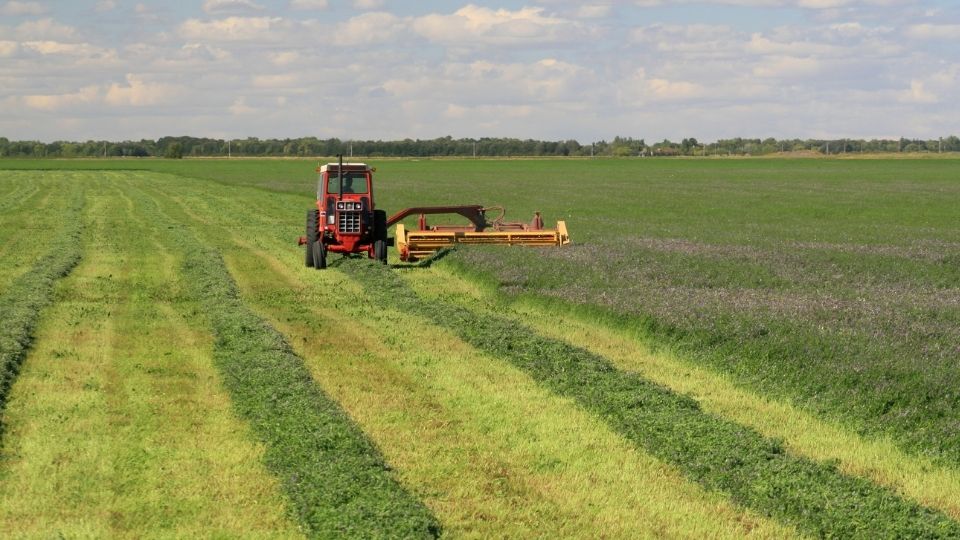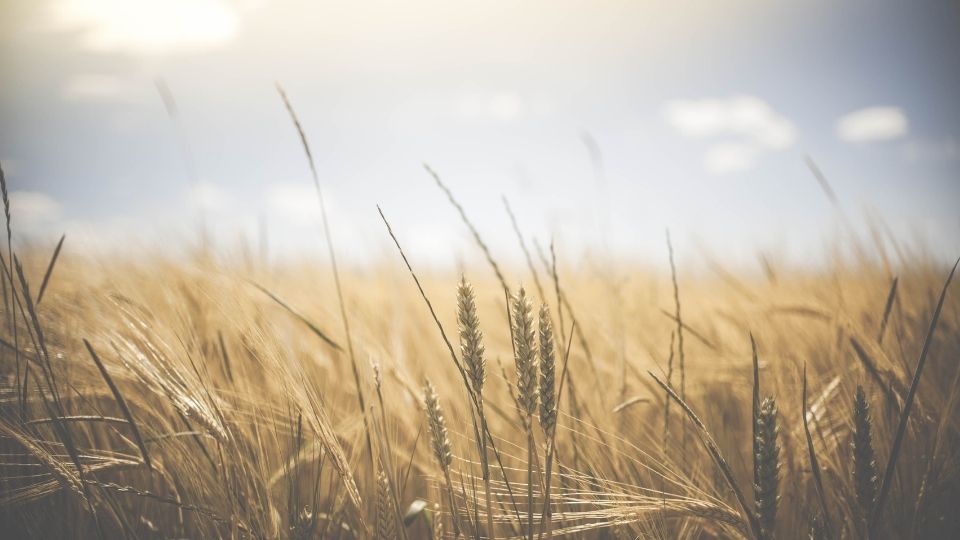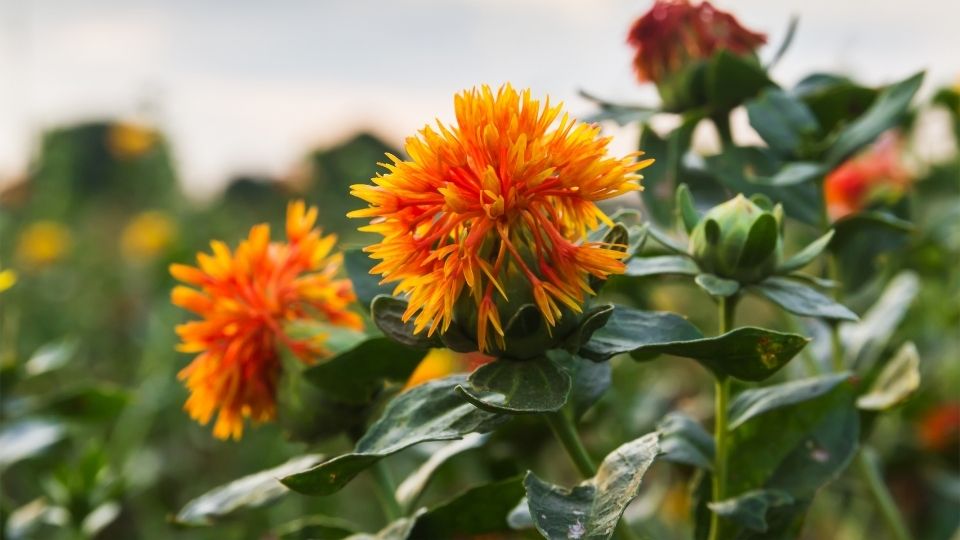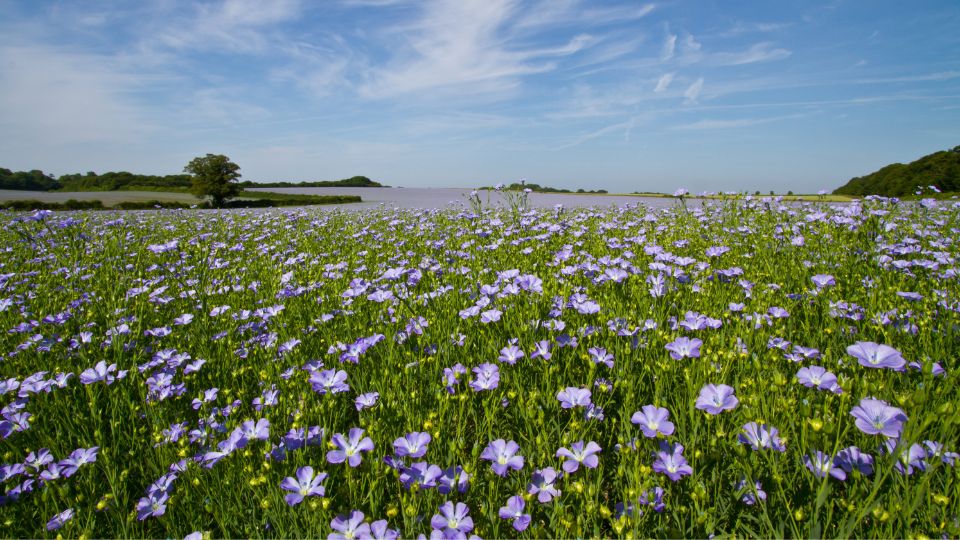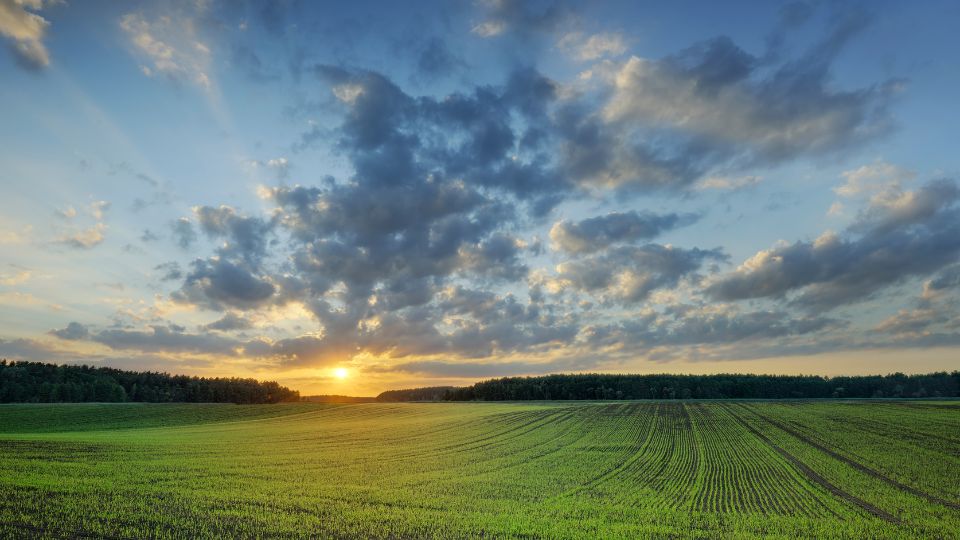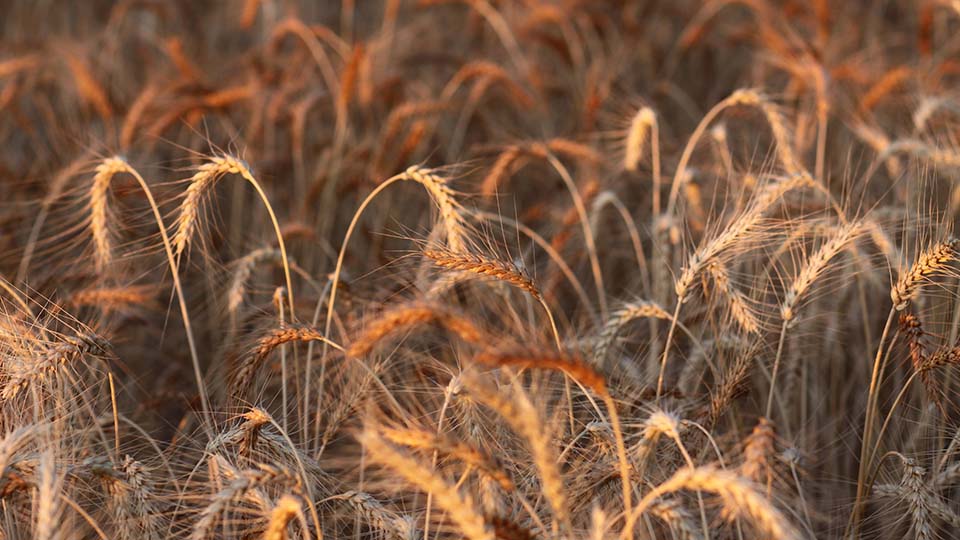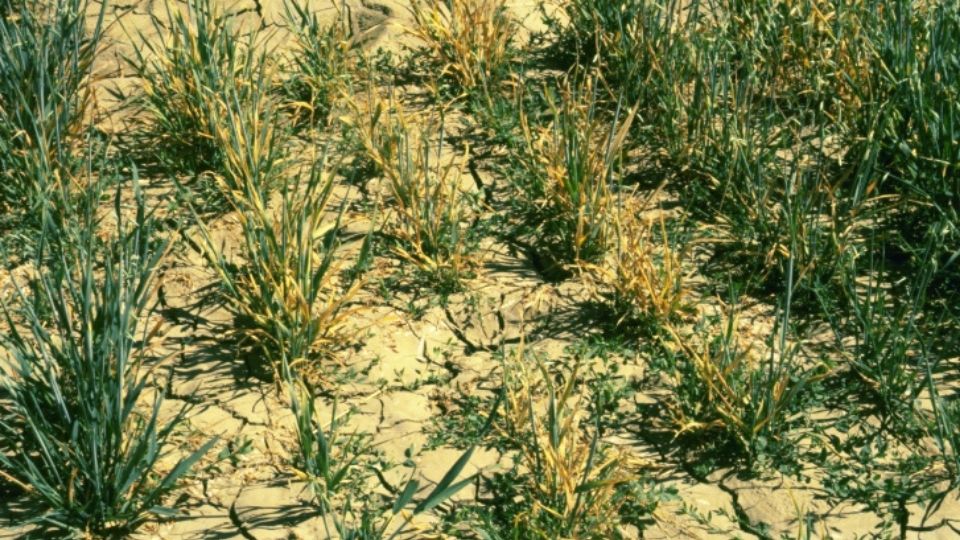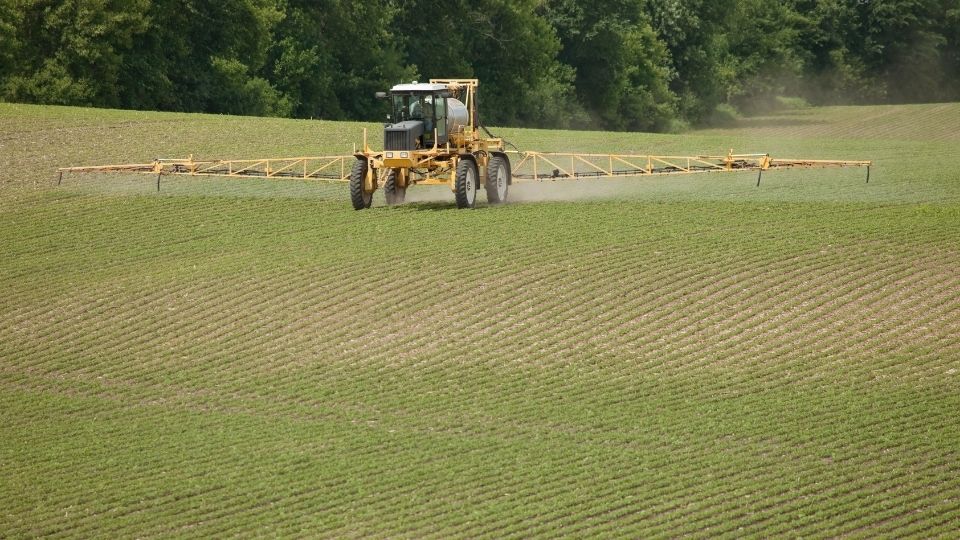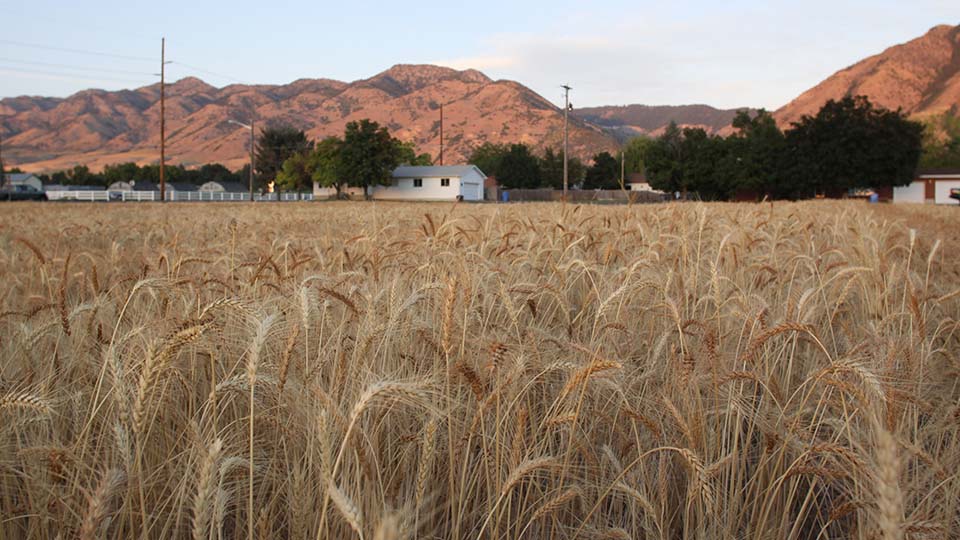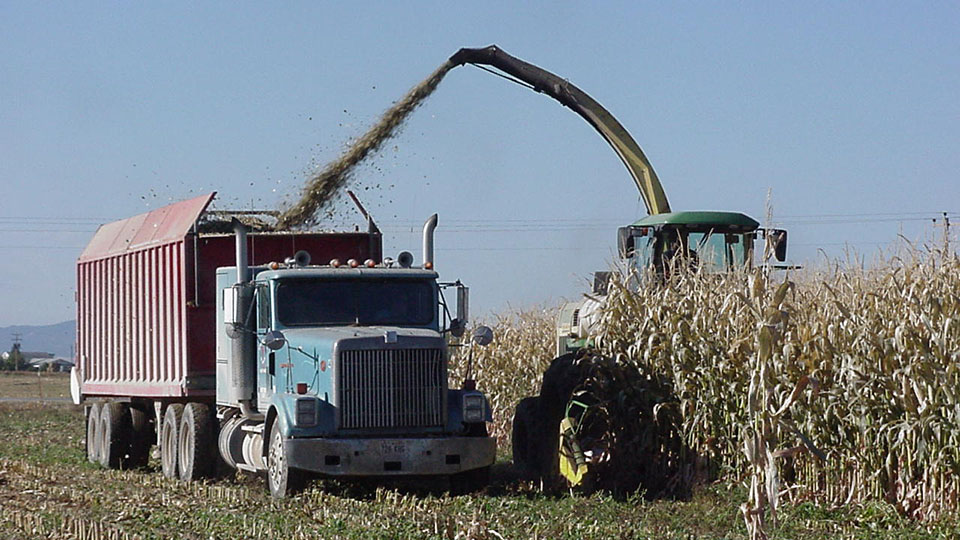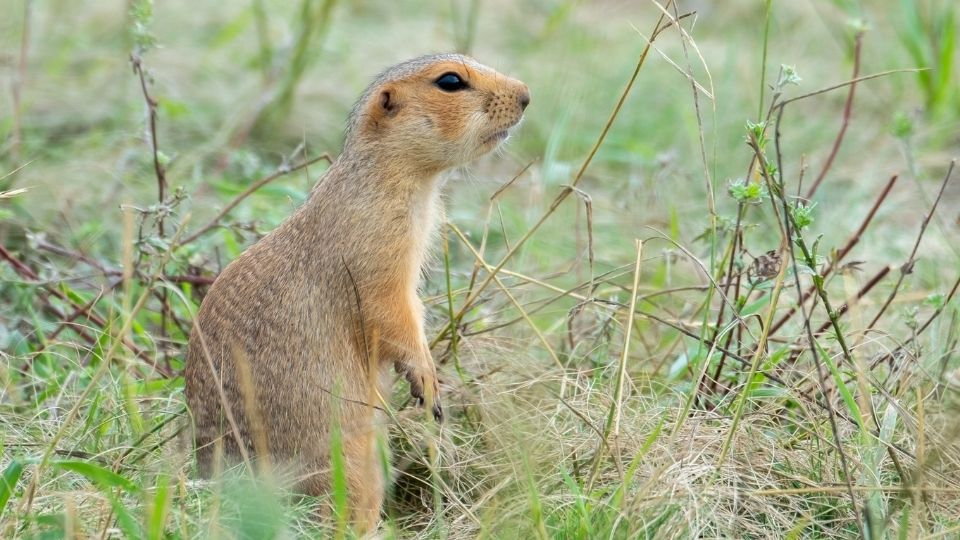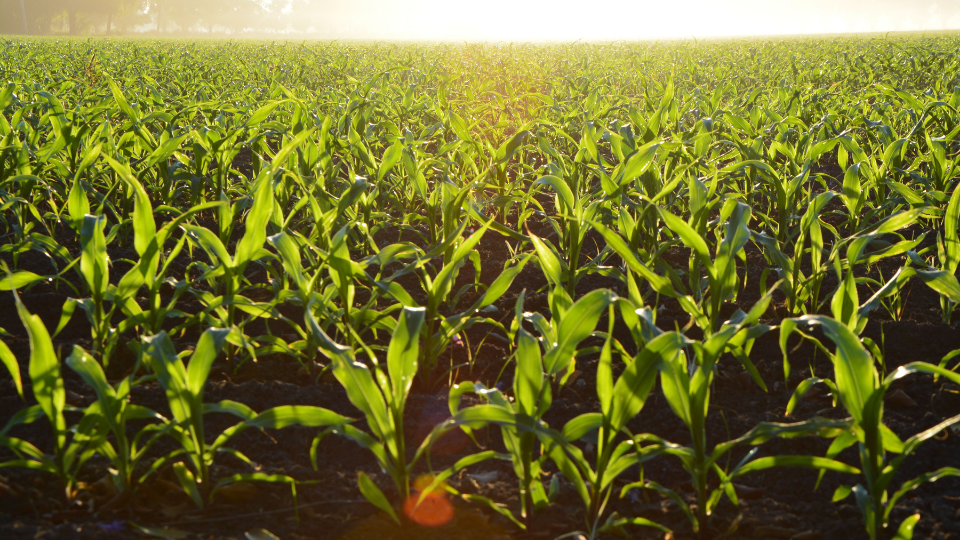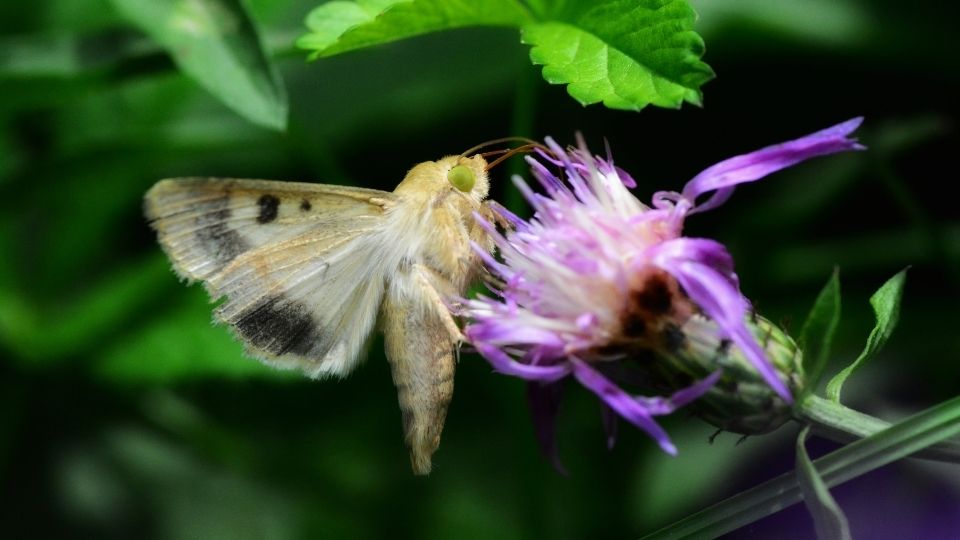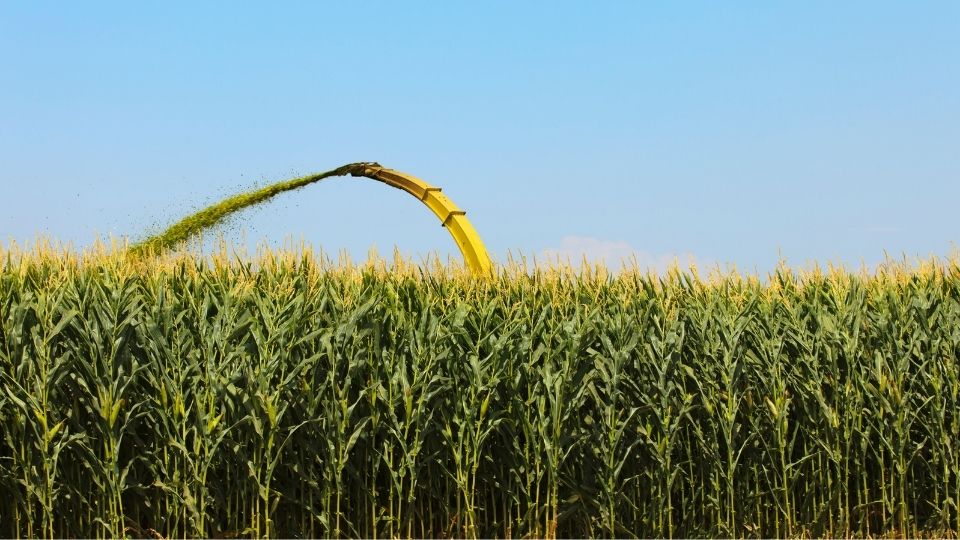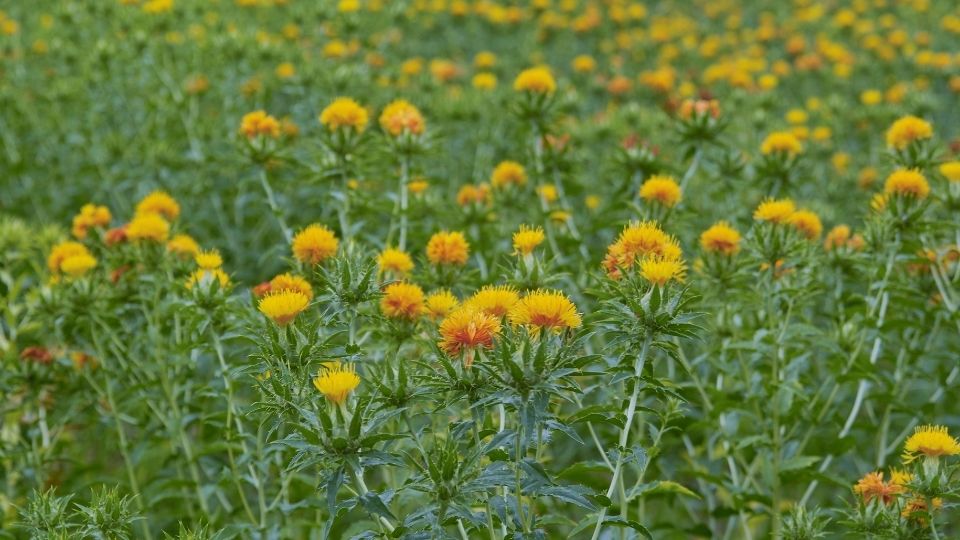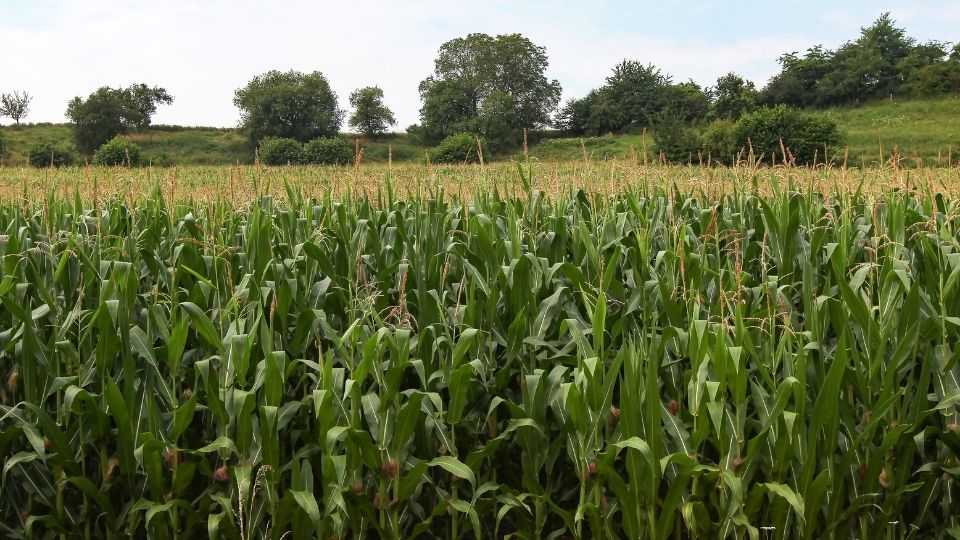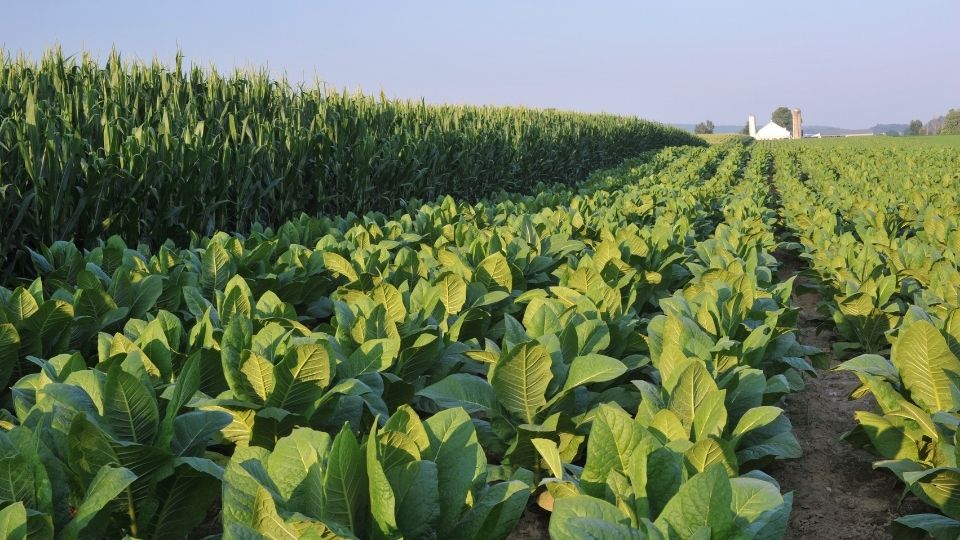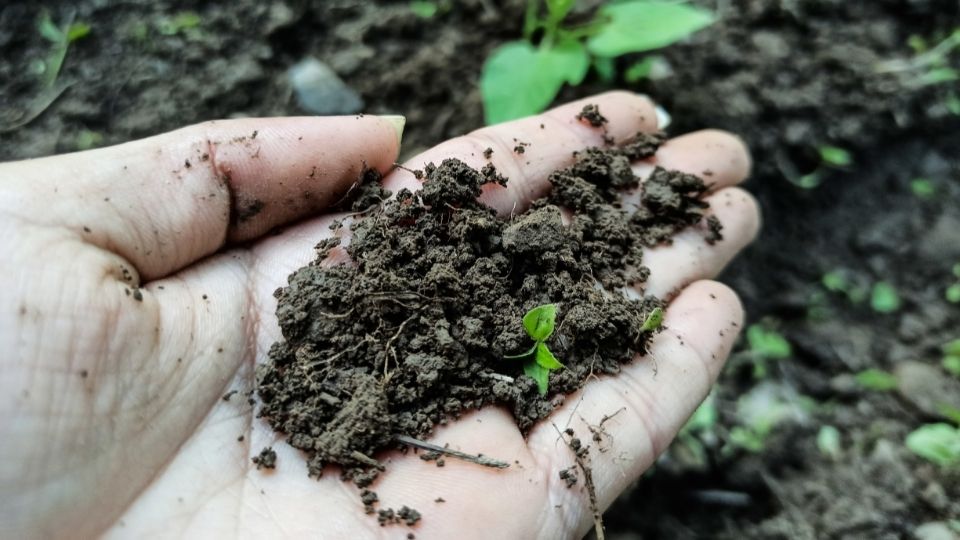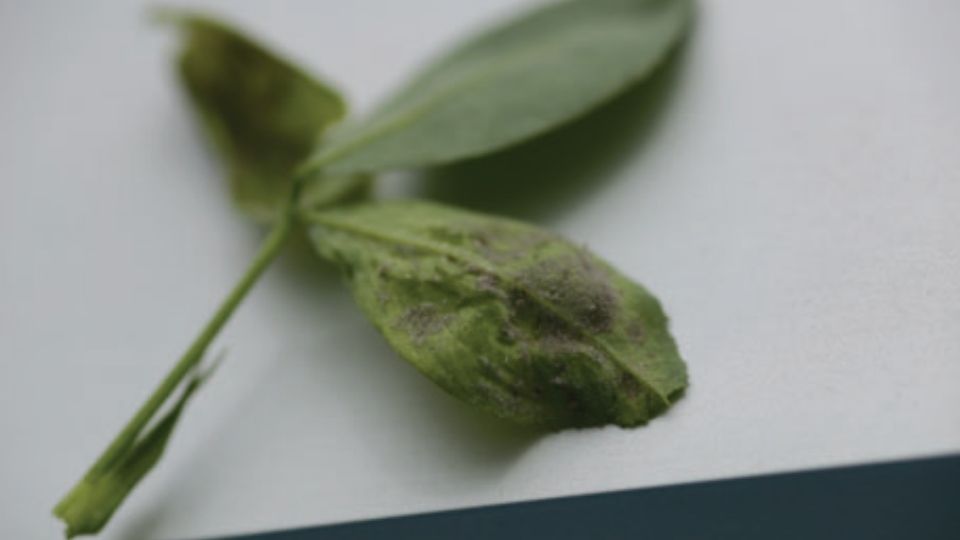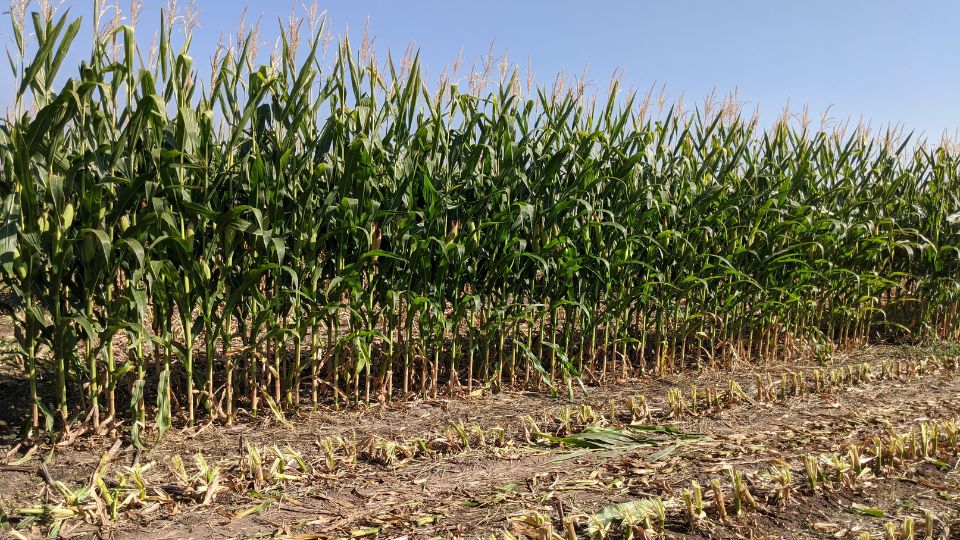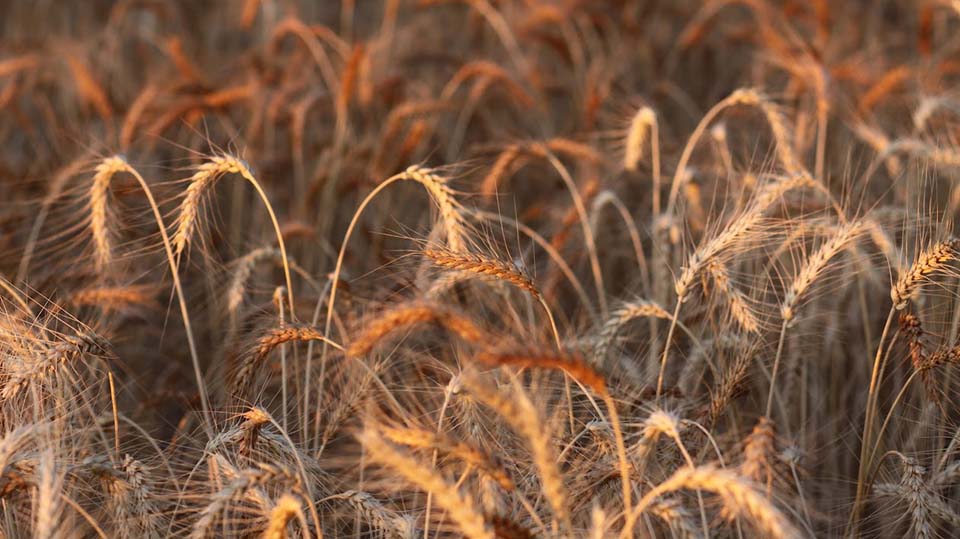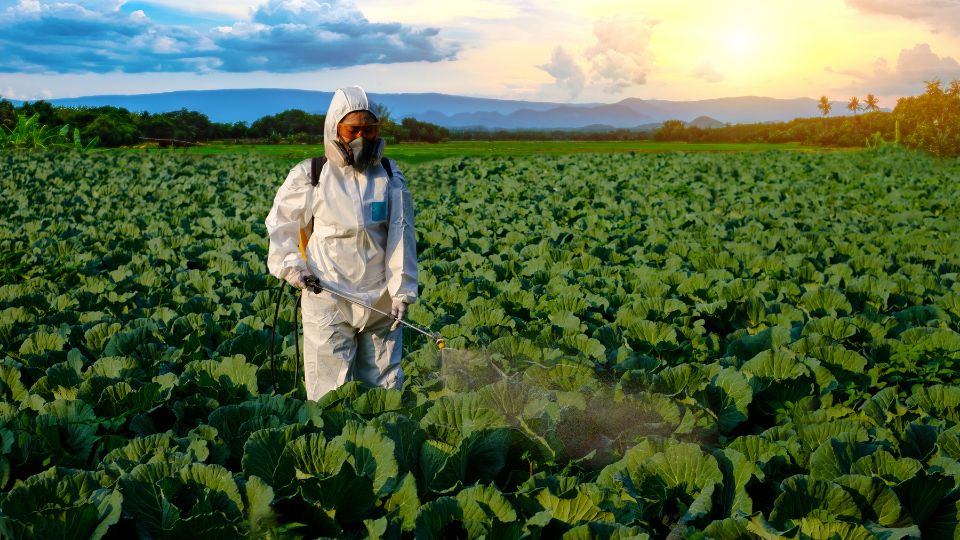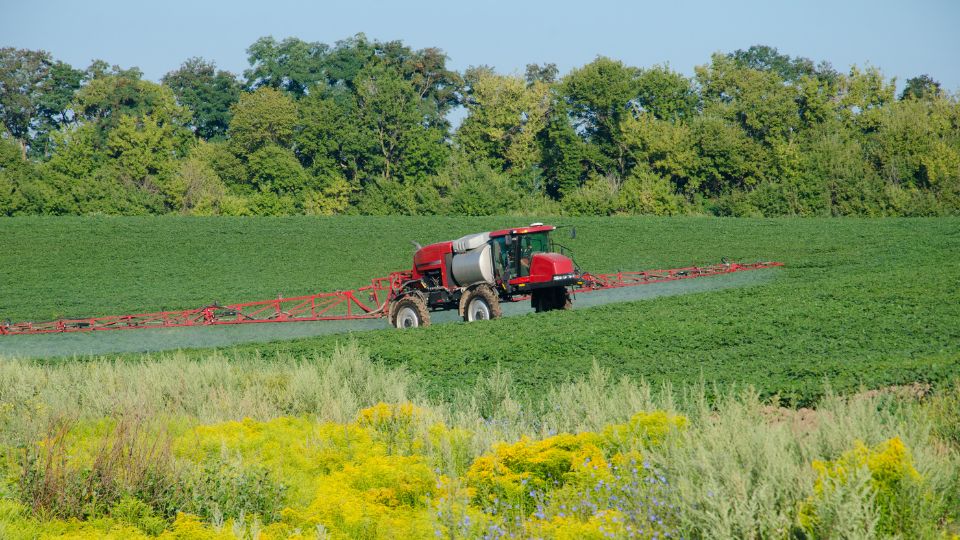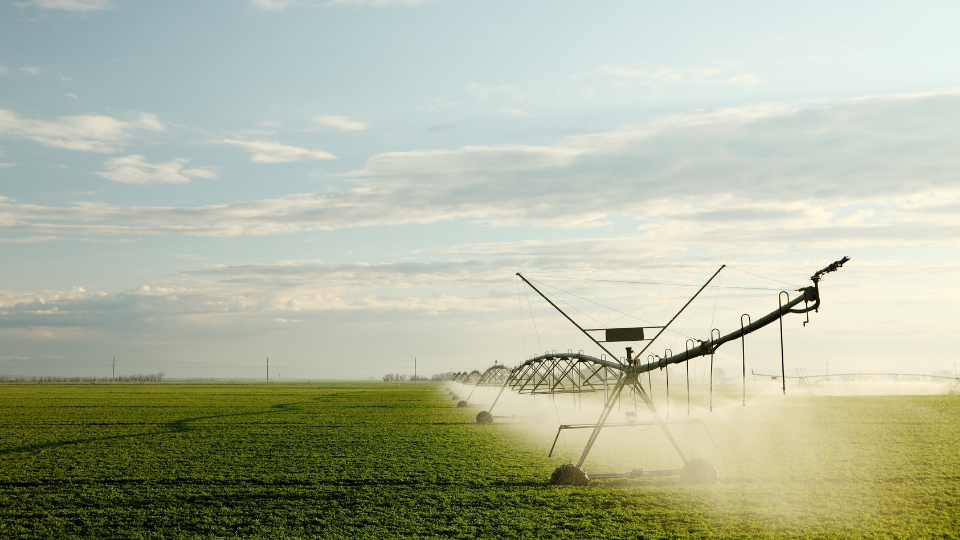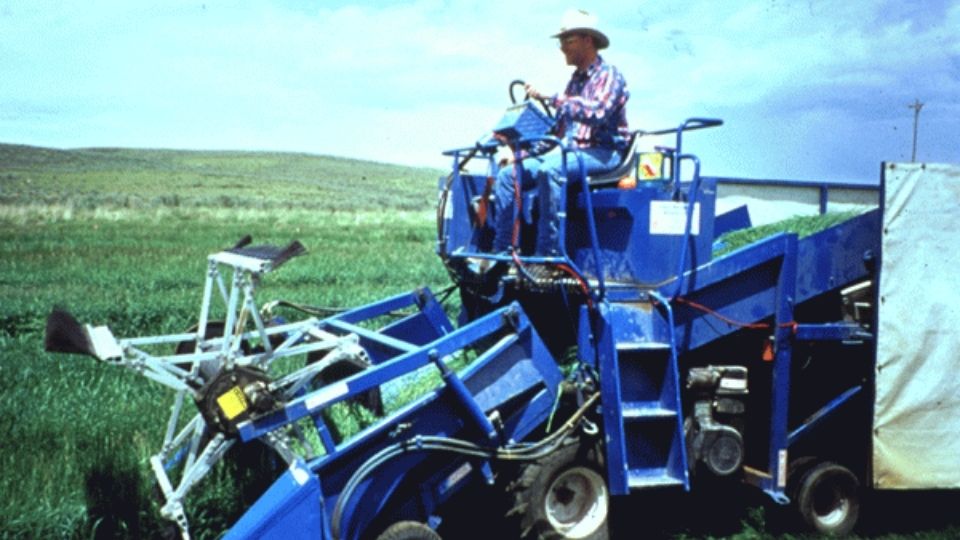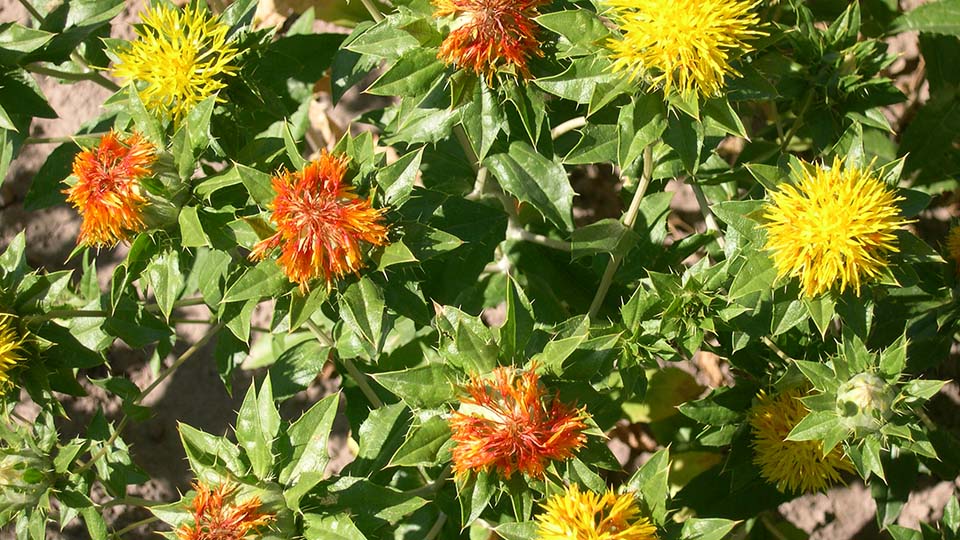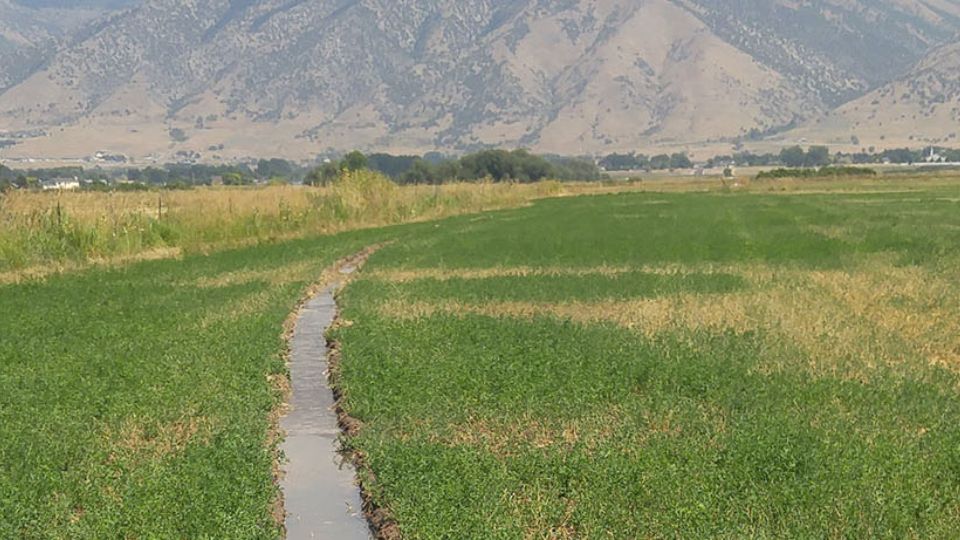Irrigation of Safflower in Northern Utah
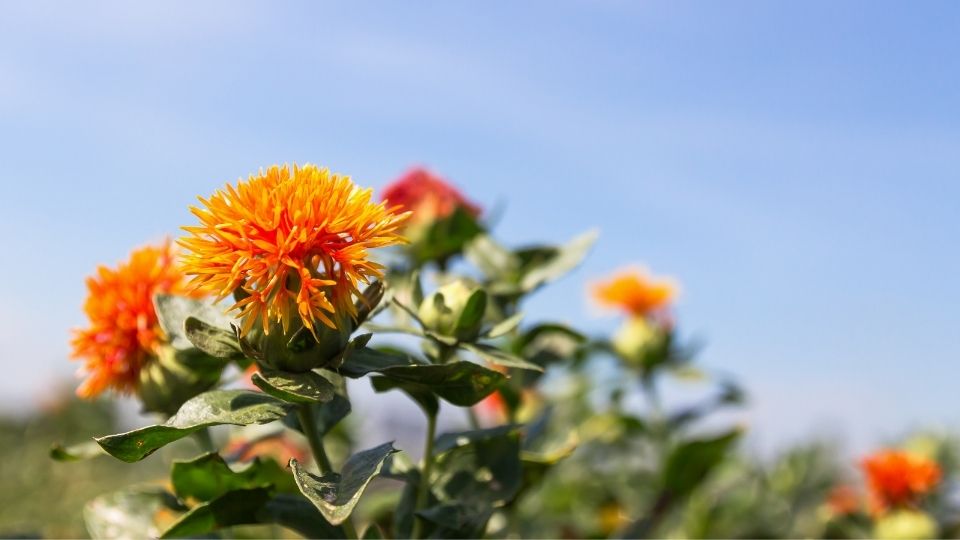
Introduction
Most safflower in Northern Utah and Southern Idaho is grown under dryland conditions; however, irrigated safflower can provide higher yields and increase net returns. Two perceived concerns with irrigated safflower are an increase the severity of Alternaria leaf spot disease and delayed maturity in the fall. The objectives of the studies were to determine impact of irrigation on safflower yield and Alternaria leaf spot disease.
Experimental Design
The study was conducted at the Utah State University Greenville Farm in North Logan, Utah, (41°45'47.00"N, 111°48'58.79"W, 4595 feet elevation) in 2013 and 2014. Research included four irrigation treatments and two fungicide treatments.
Irrigation Treatments (about 3 inches per irrigation):
- No irrigation as a control
- Irrigation at elongation (one irrigation)
- Irrigation at elongation and branching (two irrigations)
- Irrigation at elongation, branching, and early flowering (three irrigations)
Fungicide Application
- No fungicide application
- One fungicide application
The experimental design was a randomized complete block split-plot with irrigation as the whole plot factor and fungicide as the sub-plot factor.
Treatments were replicated six times (24 whole plots and 48 sub-plots). The whole plots were 210 feet by 50 feet in size and were irrigated by sprinklers spaced 30 feet by 50 feet. Half of each plot (i.e., the sub-plot) was treated with a fungicide application during flowering. Safflower was harvested with a small plot combine after the seed reached 8 percent moisture.
Table 1 is a summary of the monthly activities and crop growth stages. In both years the first irrigation was mid-June and the second and third irrigations were in July. The fungicide application was in early August.
Results
The results of 2013 and 2014 are presented separately because of the difference in soil moisture conditions, precipitation, weather, and previous years cropping.
Figure 1 shows the 2013 yields for the four irrigation levels. Safflower yields increased with the amount of irrigation water applied. A single, early irrigation, increased yields over no irrigation and two irrigations were better than one. However, little difference existed between two and three irrigations. This suggests that adequate water availability through flowering is more important to yield than after flowering.
Along with the irrigation data in 2013, soil moisture measurements were taken to a depth of 5 feet at six locations at 2 week intervals to estimate crop evapo-transpiration and for irrigation scheduling. This data, coupled with the irrigation and precipitation, show that crop water use ranged from 8.7 to 19.0 inches with respective yields ranging from 1,705 to 3,920 lbs./acre. The total water use may be slightly higher, because past research by others indicate that safflower may extract water deeper than 5 feet.
Table 1: Summary of safflower production management.
| Month | 2013 | 2014 |
|---|---|---|
| April | Fertilized 70 lbs,/acre N22nd - Herbicide Sonalan at 2 pints/acre25th – Planted Variety S-208 at 20 lbs, per acre.0.19 inch of rain | Fertilized 70 lbs./acre N11th - Herbicide Sonalan at 2 pints/acre14th – Planted Variety S-208 at 20 lbs. per acre.2.16 inches of rain |
| May | 1.77 inches of rain | 1.3 inches of rain |
| June | 11th-14th - First Irrigation, elongationOnly trace of rain | 11th-14th - First Irrigation, elongation0.96 inch of rain |
| July | 2nd - Second Irrigation, branching19th - Third Irrigation, flowering0.25 inch of rain | 2nd - Second Irrigation, branching17th - Third Irrigation, flowering0.97 inch of rain |
| August | 9th - Fungicide application of Quadris Flowable at 12 oz. per acreNo rain | 5th - Fungicide application Quadris Flowable at 12 oz. per acre2.38 inches of rain |
| September | 0.44 inch of rain | 2.16 inches of rain |
| October | 9th and 21st – Harvest | 9-th – 10th Harvest |
Rain totals for April through September 2.67 inches in 2013 and 9.93 inches in 2014.
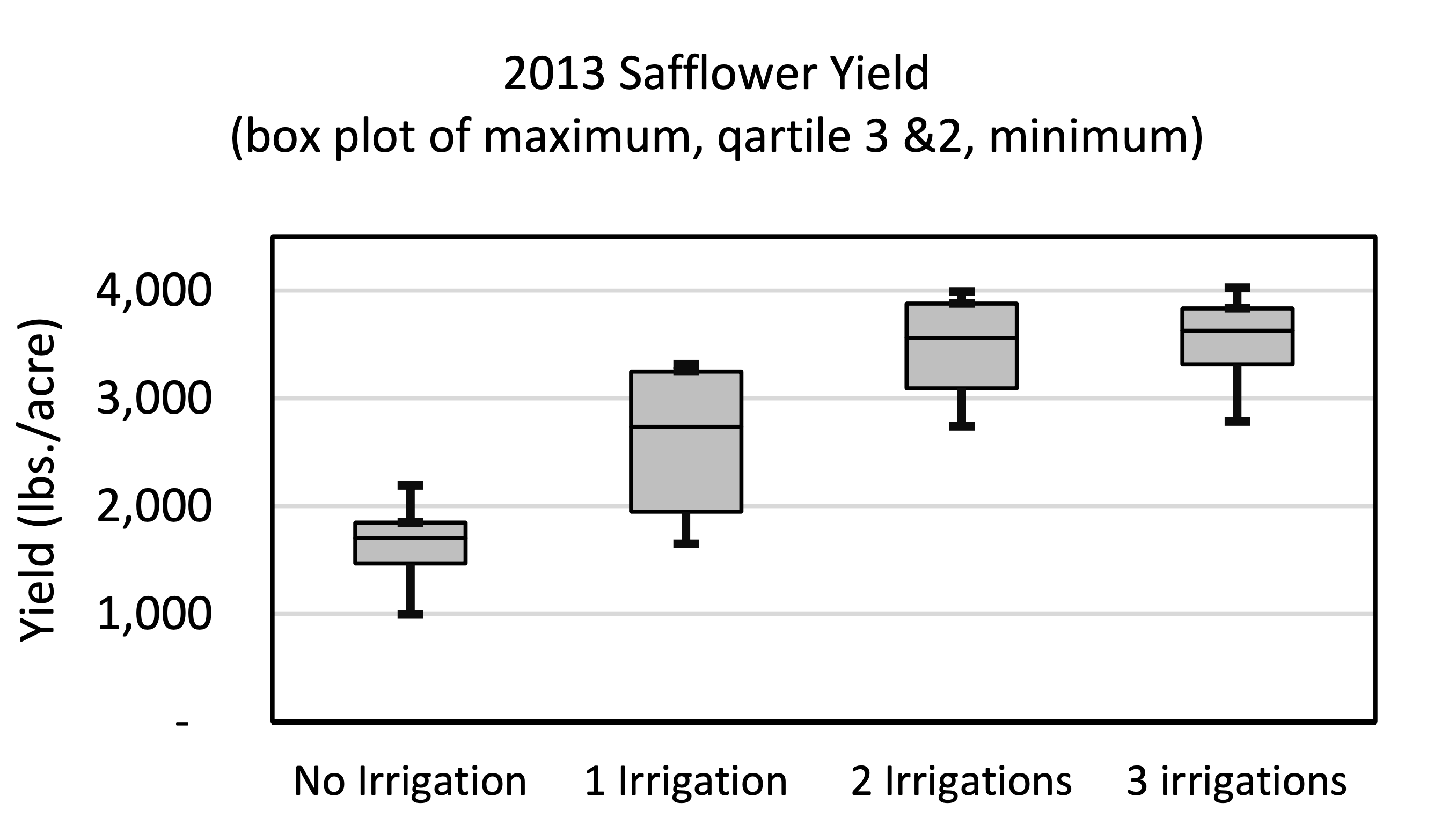
Photos 1 and 2 show the difference in safflower growth in 2013 due to irrigation. In Photo 1, the greenest plot in the foreground that is just beginning to flower had two irrigations while the safflower in bloom had no irrigation. Photo 2 shows differences in growth stages and the number of flower heads resulting from the various irrigation levels.
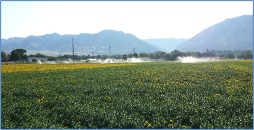
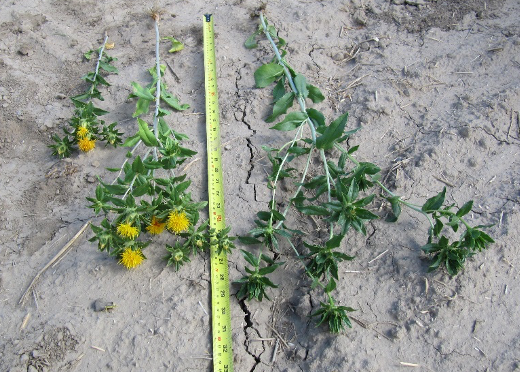
In 2014, the yields were not as strongly correlated with irrigation due to large differences in the beginning soil moisture between the plots (Figure 2). The differences in beginning soil moisture correlate with the crop and irrigation practices the previous year.
Soil moisture data were obtained for eight sites in 2014. At the beginning of the season, total soil moisture ranged from 14.4 to 21.3 inches, with soil moisture depletions up to 7.5 inches from the top 5 feet of soil.
There was a strong correlation between beginning soil moisture and yield; the highest yields were obtained where the soil water was at field capacity at the beginning of the growing season. In 2014, the soil moisture, coupled with irrigation and precipitation data, indicate that about 19 to 20 inches of water is required for a yield of 4,000 lbs./acre. The 2014 yields were influenced by previously grown crops described as follows:
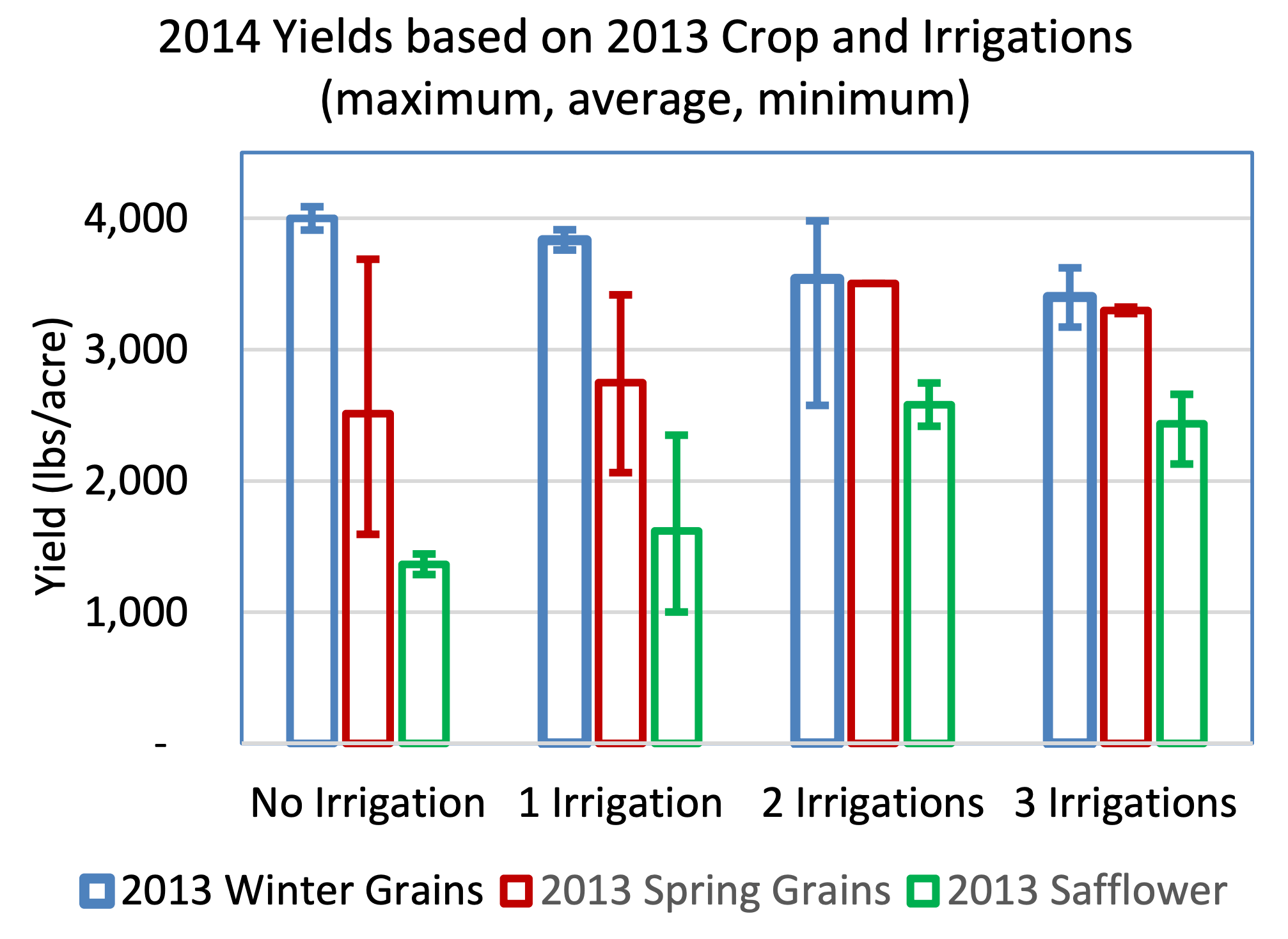
2013 Winter Wheat
The yields where the winter wheat was grown the previous year were high regardless of the irrigation level due to full soil moisture profile at planting. The soil moisture was maintained at optimal levels in 2013 for small grain variety trials. The crop rotation for that field was fallow (2012)-winter grains (2013)-safflower (2014).
2013 Safflower
The field where safflower was grown the year before had much lower yield due to depletion of water and nutrients by safflower. The crop rotation for that field was spring grains (2012) – safflower (2013) – safflower (2014). In these plots, yield increased with irrigation except there was no significant yield difference between two and three irrigations.
Spring Grain 2013
The field that was planted to spring grains in 2013 had an average yield that was less than the field planted to winter wheat in 2013, but higher than the field planted to safflower in 2013. The crop rotation for that field was safflower (2012) - spring grains (2013) – safflower (2014).
Observations on Management Practices
Cropping Pattern
Safflower is a good crop to follow irrigated crops with shallow root zones. Safflower develops a deep root zone during the year. We monitored soil moisture to a depth of 5 feet and found that safflower had extracted water from all depths. Other research indicates that safflower can have a rooting depth much more than 5 feet [1, 2]. In addition to water, the safflower could also access nutrients not available to shallow rooted crops. In our 2014 research, back-to-back safflower yielded poorly, achieving an average of only 59 percent of the yields of plots following small grain.
Weed Control
Weed control is important to irrigated safflower. The application of the herbicide Sonalan at 2 pints/acre pre-planting effectively controlled most weeds (field bindweed being the exception) in 2013. It is important to incorporate Sonalan into the soil prior to planting. The weed control was a little less effective in 2014 with kochia weed being a problem. There are few post applied herbicide labeled for safflower so it is important to start with weed-free fields.
Planting
Plant early to ensure that maturity is reached before fall freezes impact seed maturity. Our planting occurred in mid-April each year with emergence in later April or early May. In both years the maturity and moisture content of the seed would allow harvesting in mid-September, although we were unable to harvest until October due to equipment scheduling.
Irrigation
Yields of 4,000 lbs. per acre require about 19 to 20 inches of ET (based on soil-water balance of top 5 feet). This water can come from stored soil moisture, rain, and/or irrigation. Two irrigations of about 3 inches occurring in in mid-June and the first week of July provided the most benefit to yield. The irrigation that occurred in mid-July did not significantly increase yield in 2013 or 2014. Based on observation, soil moisture measurements and yields, providing adequate water during the vegetative growth stages (elongation, branching, and flowering) determines the yield potential of safflower. Beginning soil moisture was a good indicator of yield in 2014. Soil water availability during elongation, branching, and flowering is also important. Other studies indicate that late irrigations after flowering can delay maturity and promote Alternaria in seed heads [2].
Fungicide Application
While a single fungicide application reduces Alternaria leaf spot disease symptoms, it had little to no effect on yield (see Figure 3) and seed quality. Each plotted point represents the two yields taken from a single plot (with fungicide treatment on the vertical axis and yield without fungicide treatment on the horizontal axis). The cost of fungicide application was $51 per acre (includes $5 per acre for application).

2013 Results
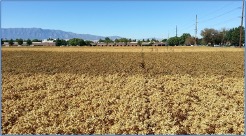
In 2013, the average seed color score for the plots treated with fungicide was 1.53 and the average score for the non-treated plots was 1.6 (1 is bright white and 10 has significant coloration, the birdseed market requires white safflower seed). The number of irrigations and yield made the most difference in color scores. In 2013, the average color scores were 1.04, 1.47, 1.72, and 2.0 for zero, one, two and three irrigations, respectively. Photo 3 shows the coloration difference between fungicide treated and non-treated areas.
2014 Results
In 2014, there was no significant yield difference between plots treated with fungicide and non-treated plots. Due to the wet fall in 2014, all plots had a significant amount of Alternaria by harvest. The average color score was 5.6, with fungicide treated plots averaging 5.8 and non-treated plots 5.4. There was a range in color scores in 2014 with scores ranging from 1 to 9. The low scores are associated with low yields and high scores associated with high yields.
Summary
Different climate and soil conditions in 2013 and 2014 provided an opportunity to study safflower response to irrigation under a wide range of conditions. In 2013, the highest yields occurred with three irrigations of about 3 inches of water each irrigation; however there was no significant difference in yields between two and three irrigations. In 2014, the safflower yields were highest in plots where the beginning soil moisture was high, regardless of in-season irrigation management. In 2014, there was adequate rainfall during the growing season to supplement the soil moisture in plots that had full soil moisture at the beginning of the season to produce high yields. The soil moisture, irrigation, and yield data indicate that adequate soil moisture during vegetative growth and flowering stage (up through first week in July for April planting) is important to produce high irrigated safflower yields. Safflower is a crop that has deep roots and effectively utilizes water from the 5 feet of root zone of the soil and was verified in this research project.
The application of a fungicide did not significantly impact yield and provided only minor improvements in seed quality. This is because Alternaria leaf spot disease did not became a problem until plant maturity had determined yield.
References
- Jerald Bergman and Hans Kandel, 2013. Safflower Production. North Dakota Extension Service, August 2013 http://www.ag.ndsu.edu/pubs/plantsci/crops/a870.pdf
- Hans-Henning Mündel (senior author), Robert E. Blackshaw, J. Robert Byers, Henry C. Huang, Daniel L. Johnson, Rick Keon, Jerry Kubik, Ross McKenzie, Brian Otto, Blair Roth, and Kim Stanford, Safflower Production on the Canadian Prairies: revisited in 2004 Agriculture and Agri-Food Canada,Lethbridge Research Centre, Lethbridge, Alberta. http://safflower.wsu.edu/SafflowerProduction_Canada.pdf
Published June 2015
Utah State University Extension
Peer-reviewed fact sheet
Authors
L. Niel Allen, Extension Irrigation Specialist; J. Earl Creech, Extension Agronomist; Michael G. Pace, Agriculture/Horticulture Agent; Clark E. Israelsen, Agriculture Agent
Related Research




